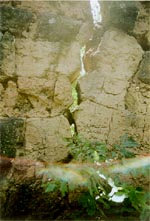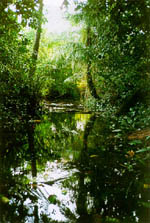 |
 |
 |

|
 |
 |
 |

|
Left: 3,000 year old Nok terracotta dug illegally, looted and exported without legal permit: Swiss owner Mr B.
Other pictures from left to right: Sungbo's Eredo moat, Old Oyo wall (Kosso), Old Owu moat.
Background: The 2,000-3,000 year old Nok, Kwatakwashi (Sokoto) and Katsina terracotta figurines are found almost entirely within Nigeria; and their art traditions spread over much of the African continent during the Bantu expansion over the last 2,000 years. Massive looting on a scale far in excess of the sales and expropriation during colonial times has been carried on with the active collaboration of senior personnel in Nigeria. A key objection to this process is that these excavations were not carried out by trained archaeologists, so almost all data on the archaeological provenance and is lost. We know almost nothing of the full in situ cultural context of what has been described as the 'Birthplace of African Art'. Also, a lack of open discussion about past problems undermines Nigeria's museum credibility at a time when Nigeria is pressing for the return of its antiquities - thereby changing 'restitution' into perceived 're-circulation'.
Nigeria also boasts some of the world's largest ancient monuments, including the 16,000km long Benin Earthworks (see main menu), Africa's largest monument (see Sungbo's Eredo on main menu), sub-Saharan Africa's most extensive ruins (see Old Oyo), paved walkways over the Sukur mountains, and other very large monuments (see Old Owu). In 1993, though, Nigeria - Africa's most populous country - did not have a single UNESCO cultural, cultural landscape or natural World Heritage Site. Now, with African Legacy's contribution, it has the Sukur Cultural Landscape as its first UNESCO World Heritage Site. There are plenty of sites for those interested in Cultural Tourism; but various infrastructural challenges arising from past attitudes remain to be overcome.
Funding:
Achievements: The 'Nigerian factor' affected work at every turn but the main results were: